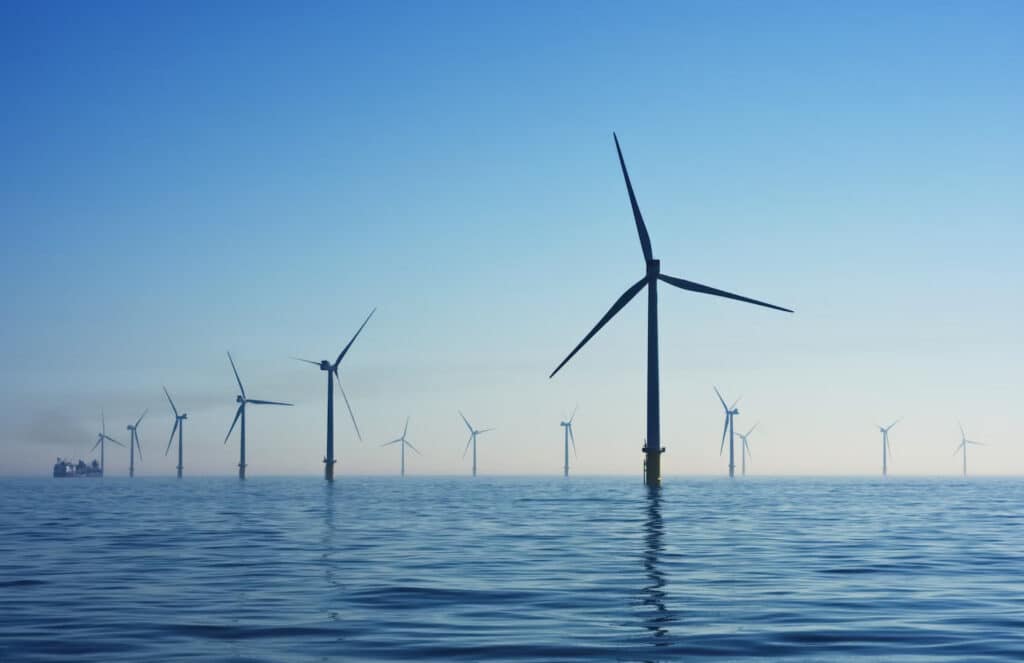“A strong renewable energy industry is good for our environment and our economy.” – Roy Cooper. The global need for adopting renewable energy is becoming increasingly clear. Businesses of all sizes are faced with the challenge of transforming their operations to become more sustainable and reduce their impact on the environment. This process, known as ‘energy transformation,’ involves transitioning to cleaner sources, such as solar and wind power. Furthermore, about 30% of the world’s energy comes from renewables, showing that sustainability is not just a trend but an essential part of responsibly running any organization or industry.
Top Companies Embracing the Shift to Renewable Energy
The Estee Lauder Company (an American beauty giant) comprises over 25 different brands under its name. Recently, they claimed to source all of their energy from renewable sources. For this purpose, they signed an MOU (memorandum of understanding) to get 22 megawatts of wind power and have also been utilizing solar energy. The CEO magazine states that this gets them 5 megawatts to use around different operations. From implementing agile business transformation to leading the way in utilizing clean energy, Google has achieved it all. One way through which Google conserves its energy usage is by starting its operations at minimal requirements and then ramping up the usage as it expands. As of now, the software giant draws power from solar and wind from different projects that are spread across 4 continents. Google plans on limiting its carbon footprint to absolute zero by 2030.
The BMW Group also seems concerned about the alarming situation of climate change. To lower their carbon footprint, they have been incorporating strategies to implement renewable energy. The Carbon Disclosure Project Supply Chain program is one of their initiatives to lower their carbon emissions. Irena.org states that they also use varying methods of generating renewable energy for their operations. This includes using biogas, solar, wind, photovoltaic, etc. Microsoft also recently signed an agreement with a leading solar energy provider in Singapore. Microsoft will gain 60 megawatts of solar energy from this deal. They had also previously signed a similar agreement with Atria Energy, which would provide clean energy to their office in Bangalore, India. This reflects their commitment to lowering their carbon footprint as much as possible.
Economic Reasons for Embracing Clean Energy in Business
Shifting towards renewable energy is becoming more and more mainstream today. This is due to a number of factors. First, the issue of global warming is really threatening how people live. Floods, draughts and other natural disasters are all becoming frequent occurrences. This costs billions of dollars not just to the government but to businesses as well. Second, the ongoing energy crisis in Europe has also highlighted defects of depending on fossil energy, as highlighted by Forbes. Third, with a wide adaptation of the circular economy promoting the three R’s (reducing, reusing and recycling) through the supply chain — it becomes more important for businesses to lower their carbon emissions. Plus, the new circular economy also promotes government policies that revolve around providing incentives for using clean energy.
Exploring US Government Support for Businesses Adopting Clean Energy Initiatives
The US government is providing tax incentives to businesses through the Inflation Reduction Act (IRA) of 2022 and other federal schemes. According to the White House, the Act introduces tax credits covering 30% of the cost of shifting businesses to low-cost solar energy. The Act also allows businesses to deduct $1.00 per footage from their taxes when making energy efficiency upgrades. Apart from the IRA, there are also two other federal tax credit options that provide incentives for using clean energy — The investment tax credit (ITC) and the production tax credit (PTC). The former provides tax credits for switching to solar energy, while the latter provides tax credits for the amount of electricity generated from solar energy. Generally, both options cannot be claimed for the same business but can be claimed for different operations.
Energy Storage Solutions and AI-Driven Energy Management
PV magazine highlights that to make better use of clean energy, businesses not only need to generate but also store that energy for later use. For this specific purpose, Energy Storage Systems (ESS) are used. The ESS comes in different shapes and sizes. For example, ESS from SigenStor comes with a capacity range of storing around 5 kWh to 480 kWh of energy. Apart from this, the ESS capability is also being enhanced by the power of AI. Advanced AI algorithms are being used to accelerate the process of conserving and transforming energy in electricity to drive operations. Smart AI apps can help in monitoring, storage, management, consumption and troubleshooting of energy generation. The SigenApp launched by SigenStor is even incorporated with GPT 4 and is a first of its kind in the industry that takes written and verbal commands.
By switching to renewable energy, businesses can positively benefit from decreased operational costs, improved public image, increased competitive advantage and perform better.



